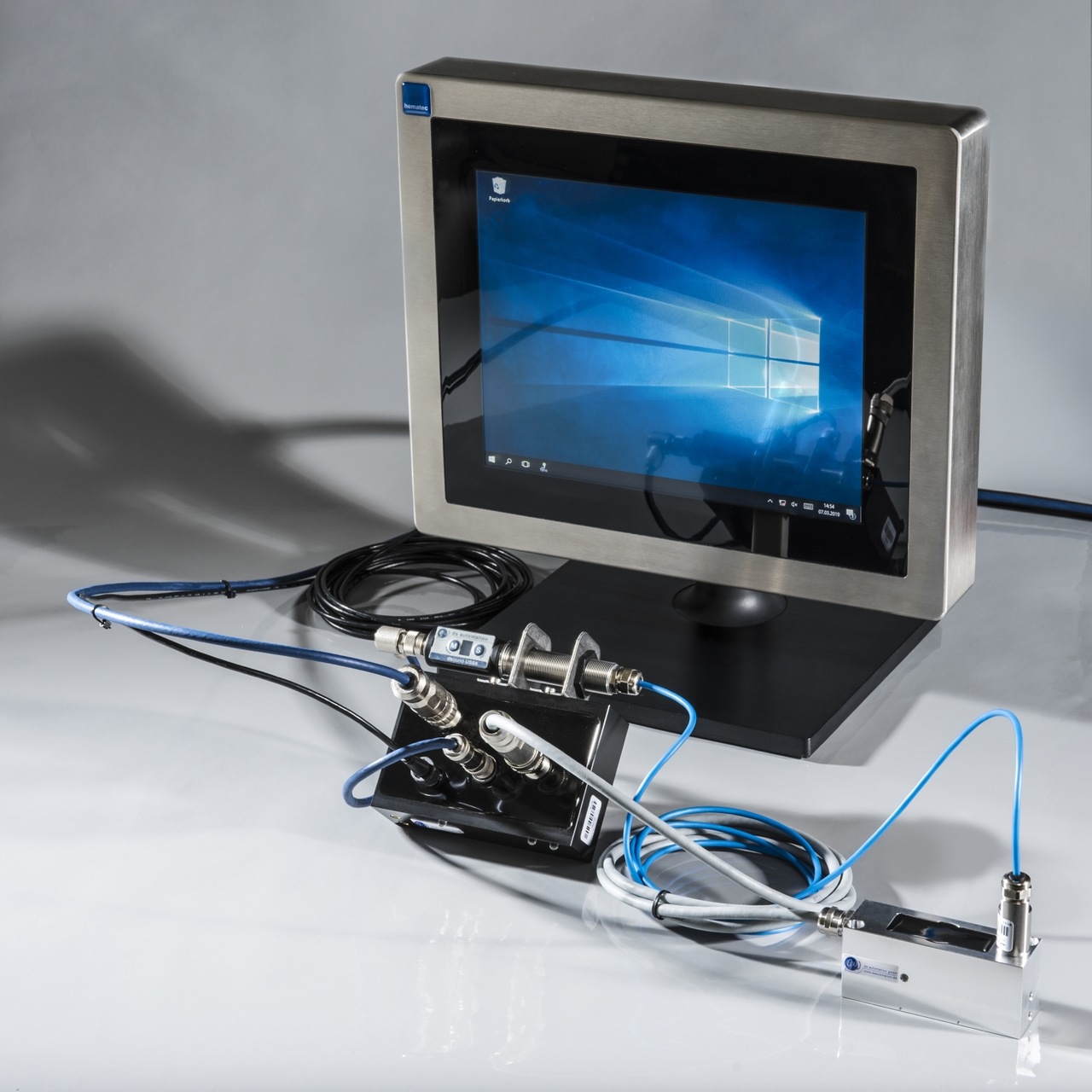
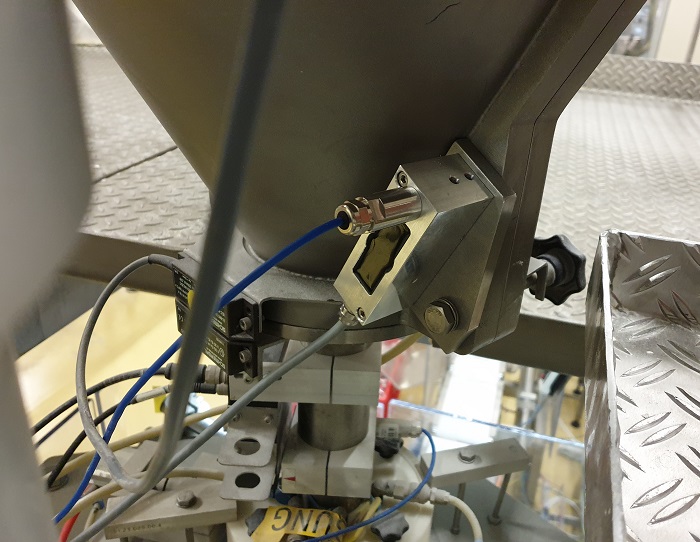
Packaging machines with systems with auger feeders carry an inherent risk of metal contact between the auger and the filling tube. In case of contact, metal abrasion can potentially occur. Metal contamination of the product can lead to significant costs for the manufacturer and damage its reputation. Furthermore, damage to the equipment can cause additional costs.
Avoiding the risk of metal contamination is a requirement that is regularly determined by internal guidelines as well as customer expectations. Manual procedures are usually costly, not continuous and difficult to validate.
The developed dsound® AMS1000-System is a complex system, that offers a validated monitoring process. It consists of an external exciter unit with structure-borne sound transducer, a sound sensor, a base unit and an IPC with user interface.
The system can be easily mounted on the hopper of a dosing system. Possible contact of the dosing auger with the filling tube is detected during filling. The sound signals are evaluated in real time and if a defined threshold is exceeded, warning and alarm messages are sent to the PLC.
If you are interested in this system, pleace contact also our distributor Rovema GmbH.

Despite all efforts to improve processes and technologies, leaking containers are still a key issue for beverage producers. Leaks affect the quality and shelf life of the product and neither consumers nor manufacturers are willing to accept this.
In addition, complaints have a negative impact on reputation. Bottlers are looking for ways to continuously improve the quality of their products. A reliable and cost-effective detection system is essential to support quality goals of manufacturers.
With dsound® Cap Check leaky containers with metal closures will be detected precise, contactless and reliable.
The system consists of a base unit with a magnetic exciter and an airborne sound sensor with integrated signal analysis and evaluation. The systems are integrated into the lines of a wide range of customers and test the tightness with a capacity of up to 72,000 containers/h.
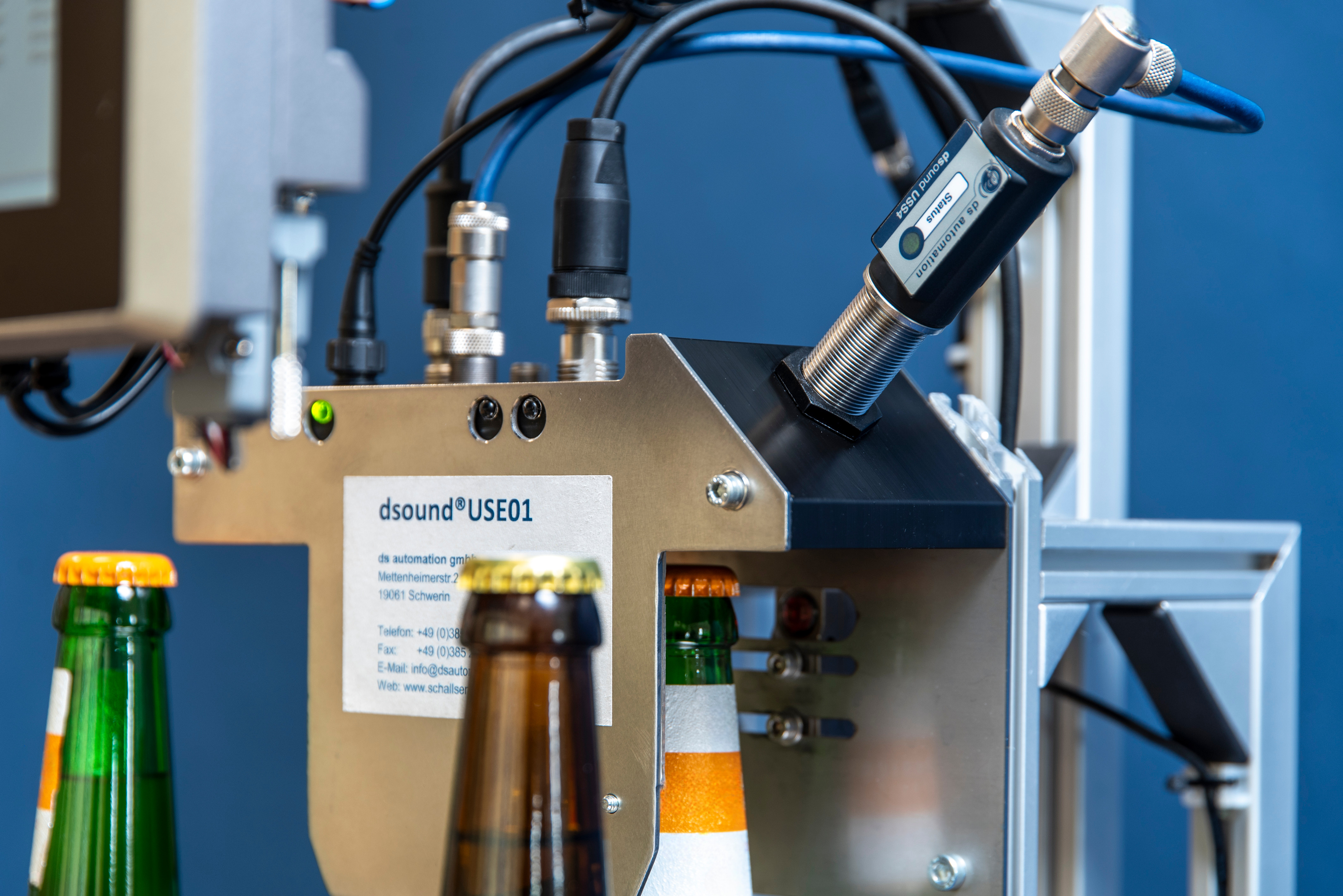
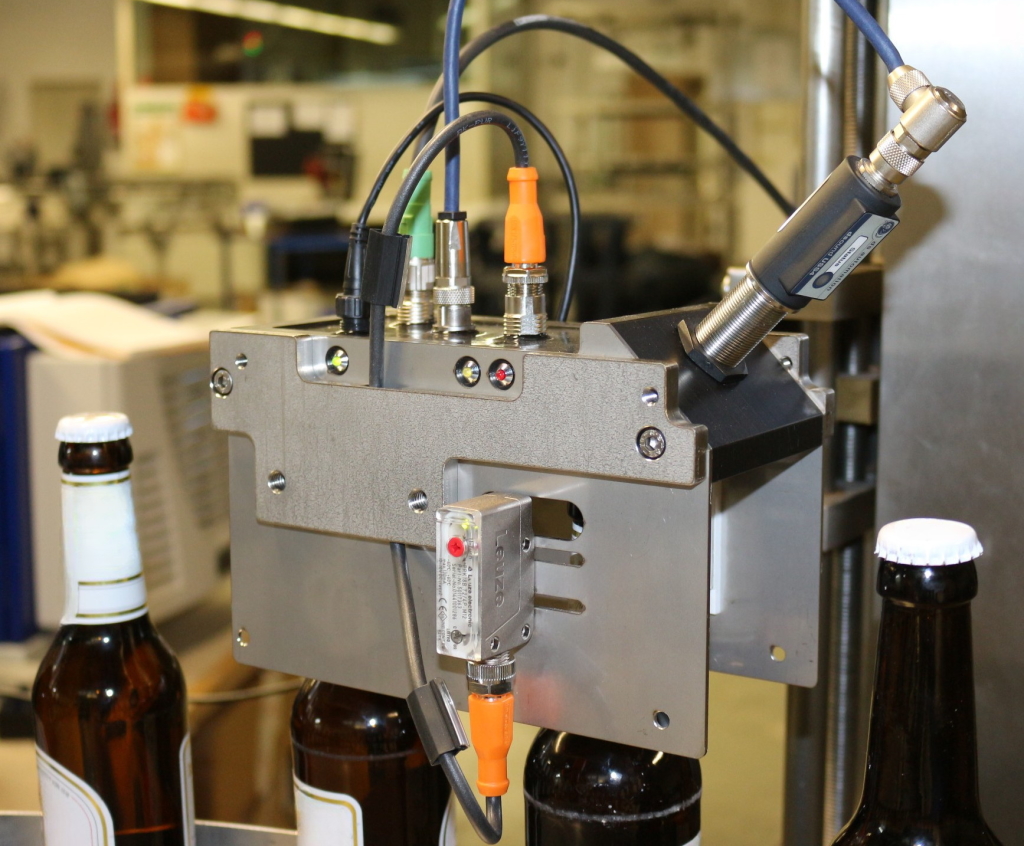


To check if containers are intact has to be done before filling glass bottles and containers for the food and beverage sector. If damaged jars burst in line, shards can fall into other jars. Bottlers look for ways to detect damaged jars as early as possible.
The dsound® Tap Check-System detects damaged and defective glass containers and enables a subsequent sorting out.
The system is set up on the line and inspects each individual container. With a capacity of 28,000 containers per hour, this system is designed for automated, industrial use. It consists of an airborne sound sensor, a mechanical exciter unit and two light barriers.

The detection of glass breakage is a very sensitive issue for a wide variety of fillers, regardless of the product to be filled. There are special requirements for glass breakage detection, especially in the food sector, since in individual cases products that there contaminated with glass splinters reached the market and the end consumer if they are not detected. At this point, complex and costly recalls of entire batches are necessary. To prevent this problem from arising in the first place, our dsound® airborne sound sensors can be used to reliably detect glass breakage incidents based on the signal level and frequency characteristics and to stop the filling line via the connection to the PLC before further damage occurs.
Various factors while manufacturing, like variations in material properties and process parameters or tool wear, lead to differences in the quality of small parts in serial productions.
The sound sensor dsound® USS4 is used for the quality inspection of small parts, to ensure a faultless part quality. For this purpose, the sound sensor is trained in advance to resonance frequencies of good parts. The small parts are acoustically excited from the outside. The sounds generated by the excitation are compared with the trained sound patterns. This process makes it possible to separate defective from defect-free parts afterwards.
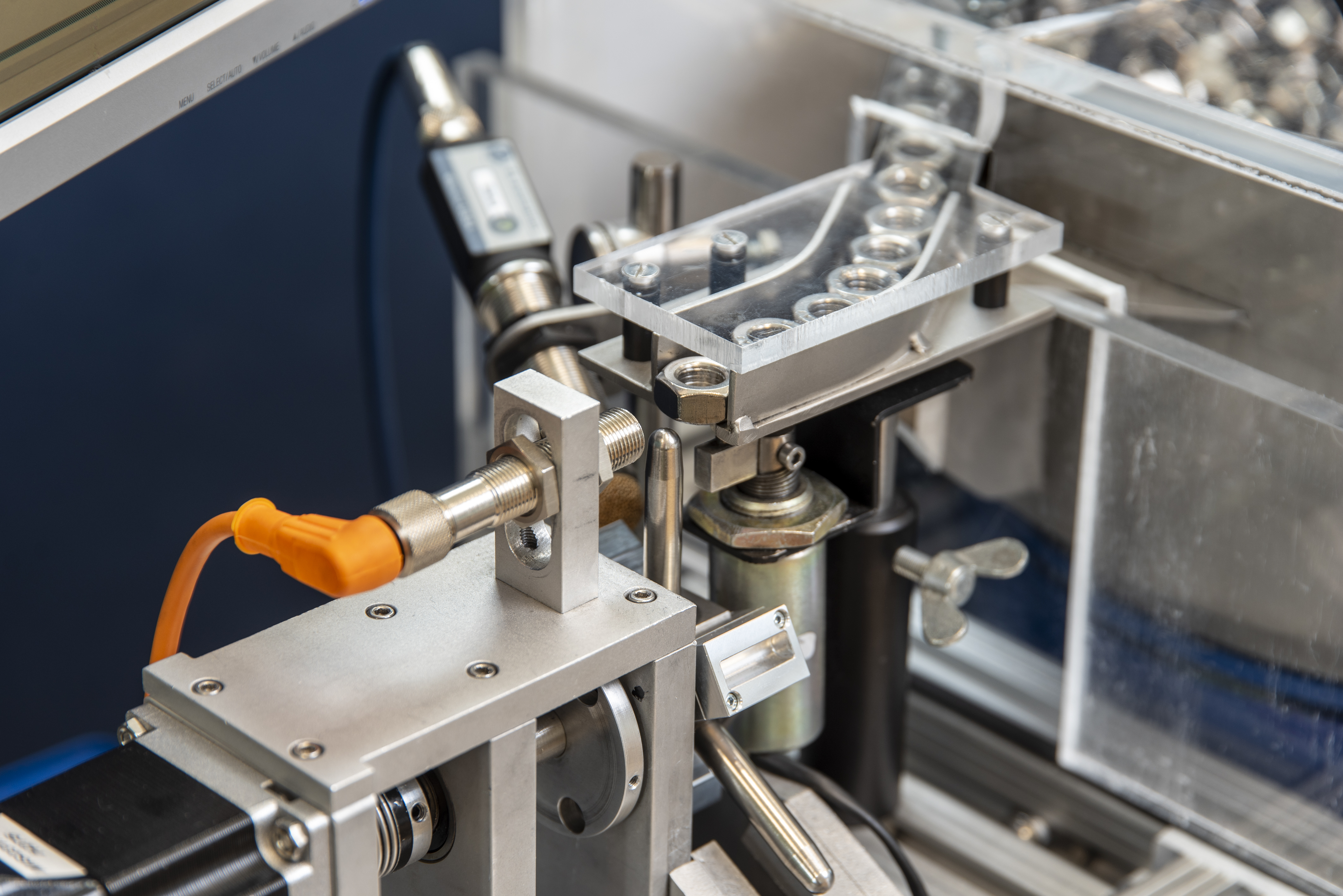


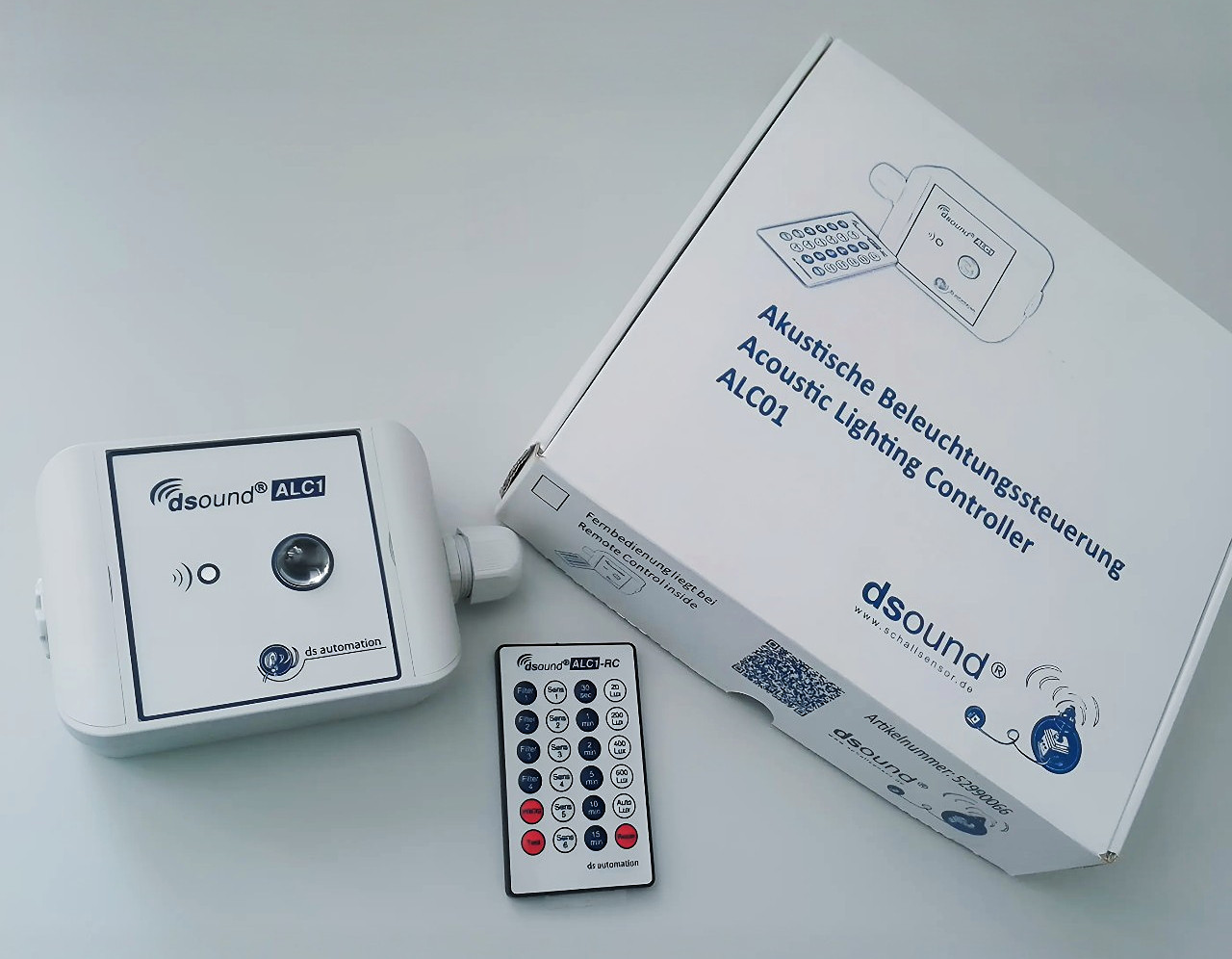
The acoustic control of various electrical devices enables targeted and energy-saving use of different devices. The devices can be switched on or off when an adjustable trigger level is exceeded and can therefore be used as required.
The dsound® ALC1 can be used for acoustic switching of lighting and electrical devices in buildings, parking garages, underground garages, factory halls, stairwells and corridors. The dsound® ALC1 can be used to switch lighting in garages and buildings as an alternative to motion detectors. The use of the dsound® ALC1 guarantees that the lighting covers the entire area, even from positions that are difficult to see. The electrical devices are controlled via the dsound® ALC1 on the basis of sound, whereby the response threshold and the frequency bands can be set via a remote control. The electrical devices can be switched directly via a built-in relay. For connection to a bus system/control center, the dsound® ALC1 has two galvanically isolated low-voltage outputs. The ambient brightness can also be detected by the device in order to make more effective use of energy savings.
Also agitators, conveyor systems, gearboxes, mills, motors and other aggregates with characteristic and distinguishable noises in standard and fault condition can be monitored in a cheap and reliable way with the help of sound sensor technology. Timely and automated problem detection helps to avoid major damages and ensure a consistently high product quality.
With a trial installation or feasibility analysis, we will support you in integrating sound sensor technology and automated sound detection into your production with an optimum benefit for your application.
Contact
Project questionnaire